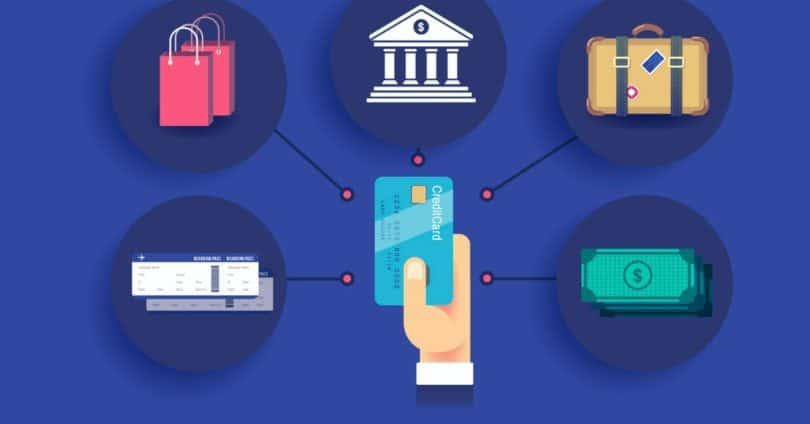The bank current account keeps track of a country’s dealings with the rest of the world for a set period of time, such as a year or a quarter. It includes net commerce in goods and services, net earnings on cross-border investments, and net transfer payments. The United States’ current account balance in Q2 2021 was -$190.3 billion.
What Does the Current Account Balance Tell You?
The CAB should theoretically be zero, but in practice, this is unlikely. If the current account is in surplus or deficit, it provides information about the government and the state of the economy, both on its own and in relation to other foreign markets.
A surplus indicates that a country’s economy is a net creditor to the rest of the globe. This suggests the country is likely due money for giving an abundance of resources to other economies. A country with a CAB surplus provides these resources to other economies, allowing them to grow production while running a deficit. This is referred to as deficit financing.
A current bank account deficit indicates that a government or economy is a net debtor to the rest of the world. It spends more than it saves and borrows resources from other countries to meet its own consumption and investment needs.
Read about the types of various bank accounts.
For example, an economy may decide that it has to invest for the future in order to generate long-term investment revenue. Rather than saving, it invests the money in a foreign country. This would be recorded as a negative in the financial account of the period’s balance of payments, but future returns would be recorded as investment income (a credit) in the current account’s income section.
Because those reserves would be utilized for overseas investment, a current account deficit is frequently accompanied by a depletion of foreign exchange holdings. The deficit could also indicate more foreign investment in the local market, in which case the local economy will be responsible for paying foreign investment income in the future.
Current account interest rate in the US
In the United States, the average bank interest rate for interest current accounts is 0.03 percent. In the meantime, the average savings account interest rate is currently 0.06 percent, and the average money market account interest rate is currently 0.09 percent. Money market accounts typically earn the highest rates, followed by savings accounts and interest current accounts, according to the Federal Deposit Insurance Corporation (FDIC).
Since 2009, the Federal Deposit Insurance Corporation (FDIC) has published the weekly average of interest rates for several types of deposit accounts. With the exception of the years 2018 and 2019, when rates were growing, the average for interest current bank accounts with a balance of $2,500 has been steadily declining since data collection began.
| Bank | Current APY* | Minimum balance to waive monthly fee and/or earn APY |
| Chase Bank | 0.00% | $1,500 |
| Bank of America | 0.01% | $1,500 |
| Wells Fargo Bank | 0.01% | $500 |
| Citibank | 0.03% | $10,000 |
| US Bank | 0.01% | $1,500 |
| BB&T | 0.01% | $25,000 |
| PNC Bank | 0.01% | $2,000 |
Click here to read about the bank account that has the highest interest rate.
Features of Current Account Balance
Goods
These are transportable and physical in character, and a change of ownership from a resident (of the local country) to a non-resident (of a foreign country) is required for a transaction to be recorded under “goods.” Merchandise, products used in the processing of other goods, and non-monetary gold are all examples of movable goods. A credit (money flowing in) is assigned to export, while a debit is assigned to an import (money going out).
Services
Transportation, commercial services, tourism, royalties, and licensing are examples of intangible acts that result in these interactions. It is documented as an import if money is paid for a service (a debit). It is listed as export if money is received (credit).
Income
Income is the money that flows into (or out of) a country as a result of salaries, portfolio investments (such as dividends), direct investments, or any other type of investment. Goods, services, and income all work together to keep an economy running. This indicates that the items in these categories are genuine resources that are transported to and from a country in order to produce goods and services.
Transfers In Progress
Currently, transfers are made unilaterally with no compensation. Remittances from workers, gifts, help and grants, official support, and pensions are all examples. Current transfers are not considered real resources that affect economic production because of their nature.
The Formula for Current Account Balance
The current bank account balance is determined by a mathematical calculation that tells us whether the current bank account is in deficit or surplus (whether it has more credit or debit). This will aid in determining the source of any differences and how resources might be reformed to allow for a more efficient economy.
CAB= (XM) + (NY+NCT)
Where:
X stands for Exports of goods and services.
M denotes Imports of goods and services
NY stands for Net income earned outside the United States.
NCT stands for Net Current Transfers.
Advantages of current accounts
If you’re considering opening a bank account, there are numerous advantages to having a current account.
- Earn interest: Some current bank accounts pay interest, meaning your money might grow even if it’s just sitting there.
- FDIC insurance: If you’ve been putting your money in jars or beneath your mattress, a current account may be of interest to you. Most current bank accounts are insured by the Federal Deposit Insurance Corporation (FDIC) and are covered to the maximum extent possible.
- Convenient access: You can get your money from a current account in a variety of ways. Visiting a bank, using your debit card at an ATM, writing a check, or making an online transfer are all common ways to spend or withdraw money.
- Debit card: Most current bank accounts come with a debit card, so instead of paying with cash at the register, you may just touch or insert your card into a card reader to pay with the funds in your account. You can also pay with your debit card online by entering the necessary information, such as your name and card number.
- Direct deposit: Your employer can set up direct transfer into your current bank account. 4 There’s no longer a chance of losing paper cheques in the mail. On payday, your paycheck can be instantly transferred into your current account, which may be speedier than receiving it by mail.
- Get paid sooner: Some banks provide early direct deposit, which allows you to receive your paycheck up to two days sooner, allowing you to pay bills and buy necessities sooner.
- Keep track of your spending: A current account keeps track of your deposits and withdrawals so you can see where your money is coming from and going. Furthermore, certain current bank accounts allow you to lock your debit card if it is ever lost or stolen, preventing illegal transactions.
Disadvantages of current accounts
While current accounts provide many advantages, they also have a few drawbacks to be aware of. Keep in mind that current accounts differ from one bank to the next, so find out what services come standard with yours.
- No interest: Some current accounts pay interest, but the majority do not. The interest rates on current accounts that do yield interest are often lower than those on savings accounts. This is because a current account is designed to be used as currency and isn’t meant to stay idle, whilst a savings account is designed to be used for long-term savings that aren’t handled as frequently.
- Fees: Another disadvantage of current accounts is that they occasionally charge monthly fees. This entails paying a fee to use your own funds. The good news is that there are several free current accounts that don’t charge monthly fees, allowing you to keep more of your money, so keep that in mind while selecting an account.
- Minimum balance requirements: Some banks require you to maintain a minimum balance in your current account at all times. If you don’t, you may be required to pay a fine. But keep in mind that not all current bank accounts are made equal, so if you’re concerned about keeping a minimum amount, look for one that doesn’t.
CONCLUSION
The trade balance (exports minus imports) is usually the most important factor in determining whether a country’s current bank account is in surplus or deficit. Import volumes normally increase during a strong economic expansion, and if exports are unable to keep up, the current bank account will be in deficit.









